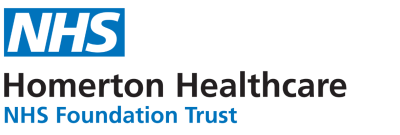You are accessing this website using a legacy browser. You may find that certain parts of the new GP Website do not work as expected. We recommend upgrading your browser to continue.
If you are based within a GP practice please contact the GPIT Helpdesk on 020 3816 3258 or email nelondonicb.cahpractitioners@nhs.net to carry out the upgrade
Full end to end training video covering Isla, EMIS and e-RS video – view here
This service enables GPs to send photos of skin conditions for review by Homerton Dermatology Consultants. Following review, the service will issue a management plan to the GP or process an onward referral - if this is needed.
Please ensure that the Teledermatology request process is followed carefully. Homerton have received a number of requests that they have needed to reject. This results in a poor experience for the patient and wastes clinician time in primary/secondary care. For information on the process- see the Standard Operating Procedure and Checklists in downloads.
Rejected Referrals:
Please ensure that the Teledermatology referral process is followed carefully so that your referral is not rejected by the Homerton, resulting in a poor experience for the patient and a waste of clinician time in primary/secondary care.
Rejections are for one of the following reasons:
Referral pathway via Isla (from May 2025)
The Isla digital platform allows for high resolution images to be safely captured and stored. Images, clinical history and patient consent are automatically saved to the patient’s Emis medical record from Isla.
The following referrals can be made via Isla:
Routine referrals for rashes:
Routine referrals for lesions (one lesion per referral)
Urgent Suspected Skin Cancer (USSC) referrals (one lesion per referral)
Isla should be used for all teledermatology referrals, but is dependent on a wi-fi connection. If a practice is unable to make referrals via Isla then the “previous” pathway should be used.
Previous referral pathway
Only routine referrals can be made via the previous pathway:
Routine referrals for rashes
Routine referrals for lesions (one lesion per referral)
Taking Images
Please note that images taken by patients are NO LONGER ACCEPTED
|
|
RASHES
|
Wipe the skin first 3 clear in focus images |
|
|
|
LESIONS (One lesion per referral)
|
Wipe the skin first 3 clear in focus images Dermatoscopic image must be included for lesions Mark specific lesion with pen or surgical tape Dermatoscope should be in contact with the skin and the light turned on |
|
For information on the process:
• Refer to the guidance documents in downloads section
• Refer to the training videos in external links section
Skin conditions that do not meet the exclusion criteria.
The following exclusions also apply for children only:
Further Guidance from Homerton on using Teledermatology
1. GP sees a patient FACE TO FACE and examines a skin lesion that meets 2WW criteria / they are suspicious of cancer
I. Refer patient using 2WW form, traditional route to clinic
2. GP sees a patient FACE TO FACE and examines a skin lesion that doesn’t meet 2WW criteria, but they are not sure of the diagnosis and so cant reassure the patient
I. Refer via Teledermatology (e-RS RAS and using proformo)
3. GP reviews a patient via VIRTUAL CONSULTATION (eg. over the phone or zoom) and the patients sends photos to the GP of their mole or skin lesion, for review.
I. If pictures are poor/unclear arrange FACE TO FACE examination and then follow 2ww wait or Teledermatology referral pathway as appropriate.
II. If pictures are good quality and clear then follow 2ww wait or Teledermatology referral pathway as appropriate.
Please ensure you complete the form and gain patient consent. It is important when sending images to ensure they meet the criteria and are clear. It is pointless sending pictures that are blurred, too distant. Lesions should always have a dermatascope picture otherwise they will result in a clinic referral anyway and you will have wasted the your time including the consultants and patients.
The following clinicians can refer to this service: GPs, Nurses
Referral methods: e-Referrals
The following clinicians can refer to this service: GPs, Physician Associate, Nurse Practitioner. All referrals must be reviewed and discussed with a GP in advance of being made.
The service is available on e-RS.
Specialty: Derrmatology
Clinic Type: Not Otherwise Specified
Service name: RAS Teledermatology - Main Outpatients Department - Homerton - RQX

Last updated: Nov 11th, 2025
Review date: Oct 1st, 2027
When you attend an event booked through the North East London ICB (City & Hackney) GP Website, we'll add the event details to your CPD section automatically.
This is an external link. Continuing will take you away from the North East London ICB (City & Hackney) GP Website. Please be aware that some external resources may be restricted to NHS Secure Network connections only.
ContinueReport a problem or suggestion using this facility. When describing your problem or suggestion, be as descriptive as possible and include any specific error messages you may see.
This website is for healthcare professionals only. It is not intended for public use.
Continue